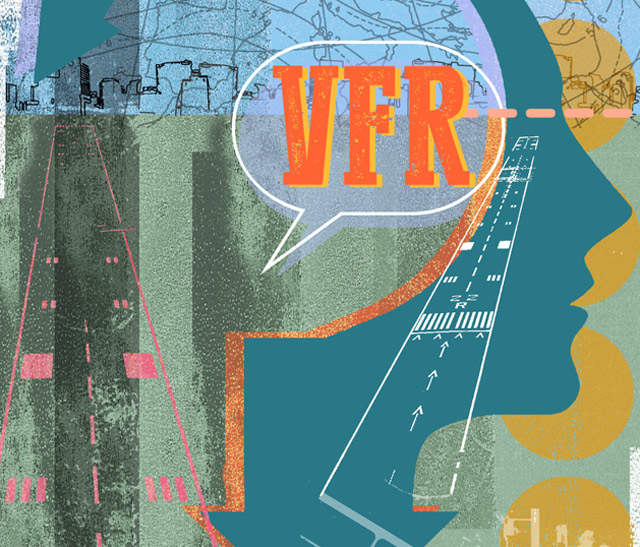Debrief: Mastering the visual approach
Fear of the unknown

Many of my clients admit their fear of flying under visual flight rules (VFR). They fear the unknown—specifically traffic, terrain, and airspace as the primary reasons. I believe there is a bigger reason. It is the fear of not finding the airport or runway until it is too late—or possibly not at all—or simply just the fear of lining up and landing on the wrong runway.
Flying on an instrument flight plan minimizes these fears, except when instructed to commence the most common of all instrument approaches—a visual approach. What happens next can be summed up in one word: drama.
How many of us can admit to accepting a visual approach and finding that we are too fast and/or high, or have no idea where the assigned runway is, or maybe we lost sight of the traffic we were instructed to follow? It happens to even the best of us when we fail to expect the possibility of a visual approach. Anticipate a visual approach anytime the airport is experiencing visual meteorological conditions. Start by slowing and configuring for the approach, and imagining your exact position relative to the runway in use. Also, load an instrument approach to the landing runway and activate it when receiving vectors for the visual approach to assist with situational awareness. I like to use the location of the FAF to visualize a five-mile final.
I expose my clients to simulated visual approaches at local airports to improve their ability to locate airfields and runways, as well as boost their confidence. I keep them in simulated IMC using a view-limiting device such as Foggles until within five to 10 miles of the airport. I advise them that the airport is 12 o’clock and so many miles, and to report the field in sight—just as ATC does when vectoring for a visual approach. Then they remove the Foggles and begin the search while visualizing their position with respect to the runway threshold.
At nontowered fields, make position reports as soon as you go visual. Use VFR terminology during these communications to accurately relay exact position in the pattern. Stating that you are “inbound from the final approach fix” doesn’t help a noninstrument-rated pilot in the pattern. Say something like “five-mile final” or “three-mile left base for runway such and such.”
Another common approach is the circle-to-land approach. There have been countless missed approaches or accidents while maneuvering at low altitude within the airport traffic pattern while attempting to locate and align with the runway in use. Initial jet type ratings and annual recurrency checks require the pilot in command to demonstrate a circle-to-land approach during the practical test. Set the heading bug to the runway heading and visualize the proper pattern entry to expect—such as downwind or base—prior to commencing the turn to the final approach course. Immediately start the entry when visual contact of the field is established to avoid getting too wide and losing sight of the runway in use. Increase power and level the aircraft to maintain speed and altitude on downwind, or reduce power and airspeed and begin the descent if on a close-in base. Landing flaps should be stowed until the base leg to avoid excessive drag and maneuvering at critically low airspeeds.
To minimize the drama, follow these tips each time you file an IFR plan and the destination weather forecast is for VFR. Ask your CFI to drill you on last-minute visual approaches at your local airport—and others less familiar—to take the angst out of the dreaded visual and circling approaches.
Jack Boyd is a 10,000-hour DPE and president of Gold Standard Aviation in Miami.
Illustration by Sarah Jones


